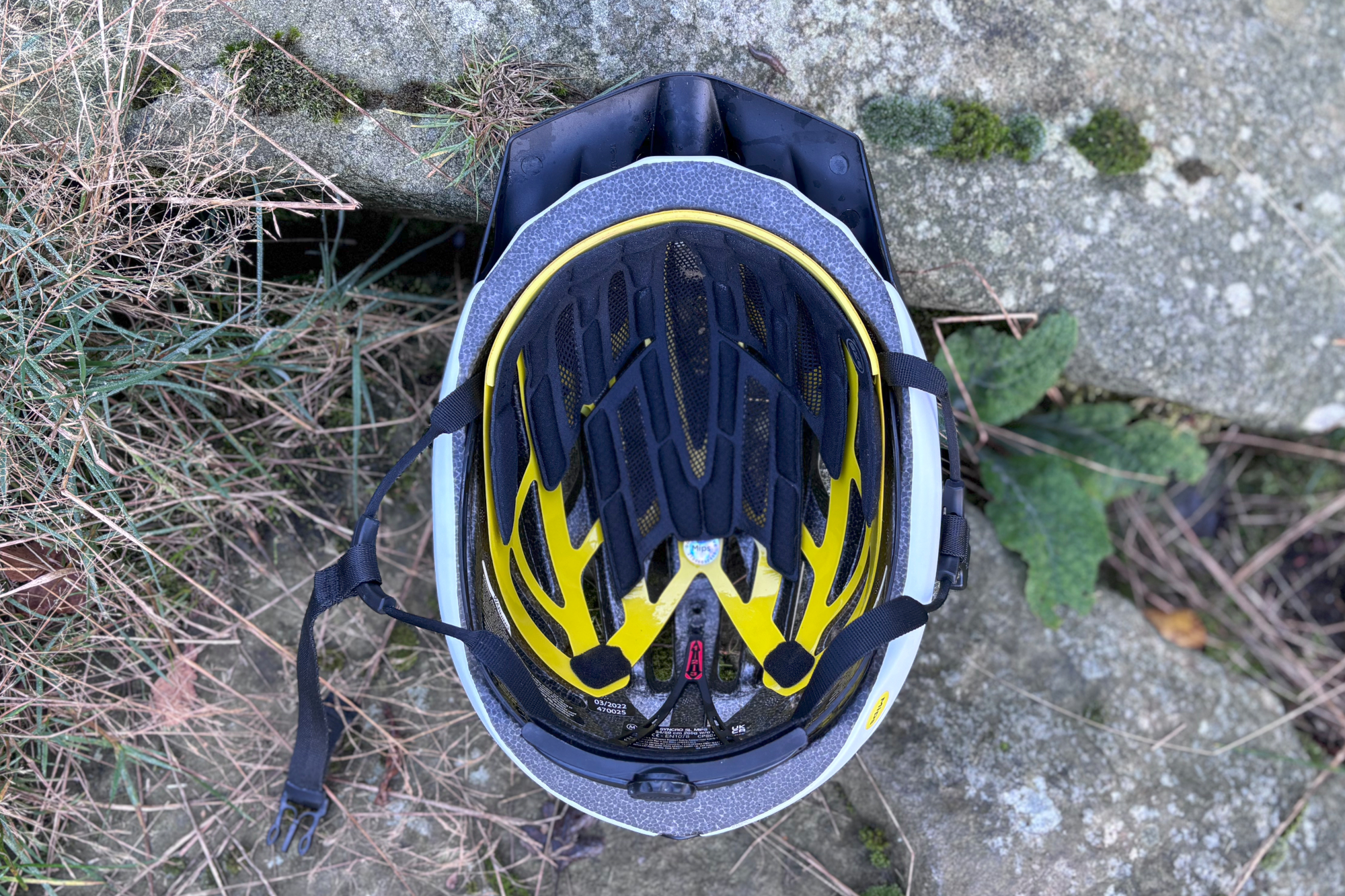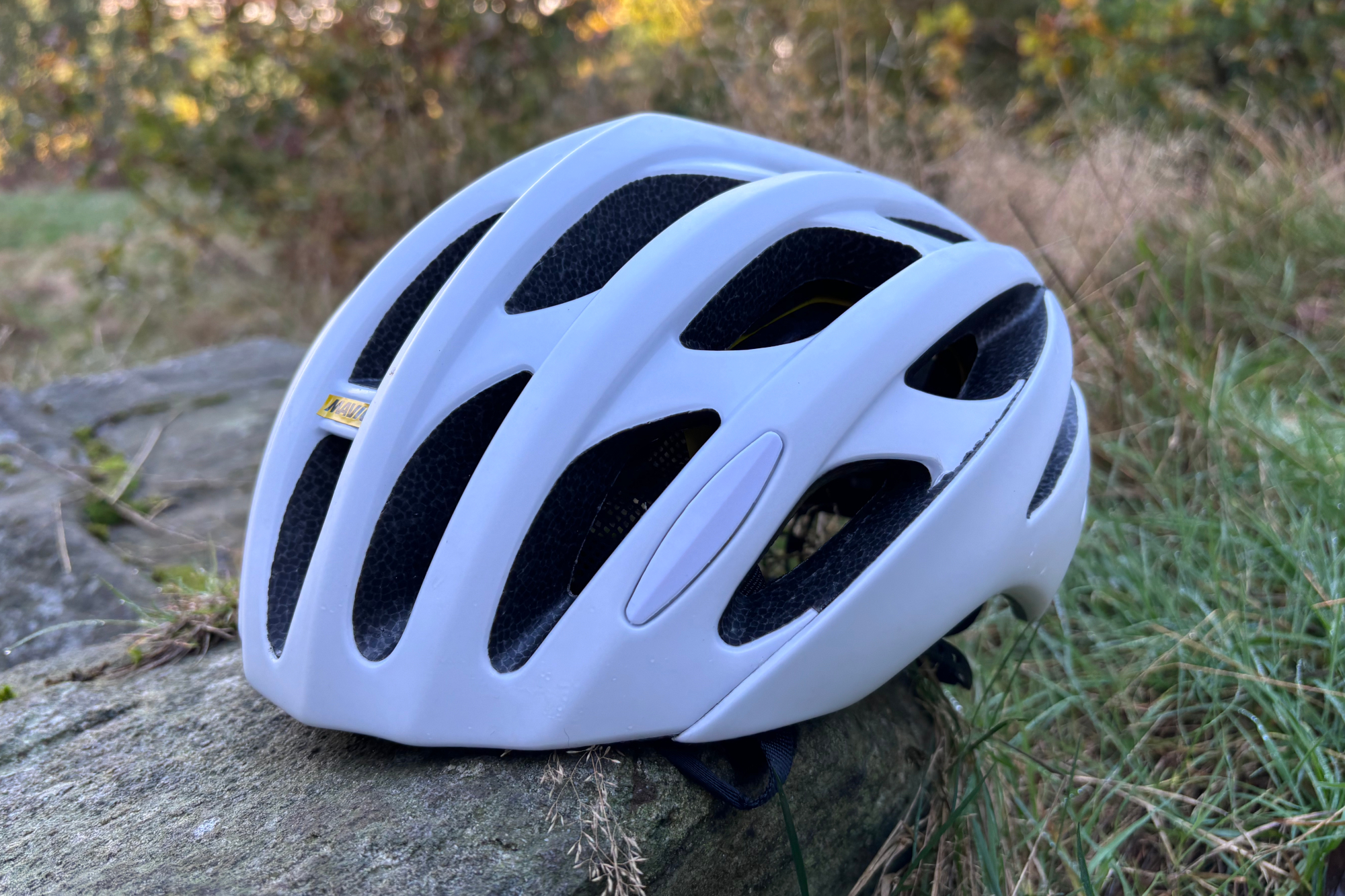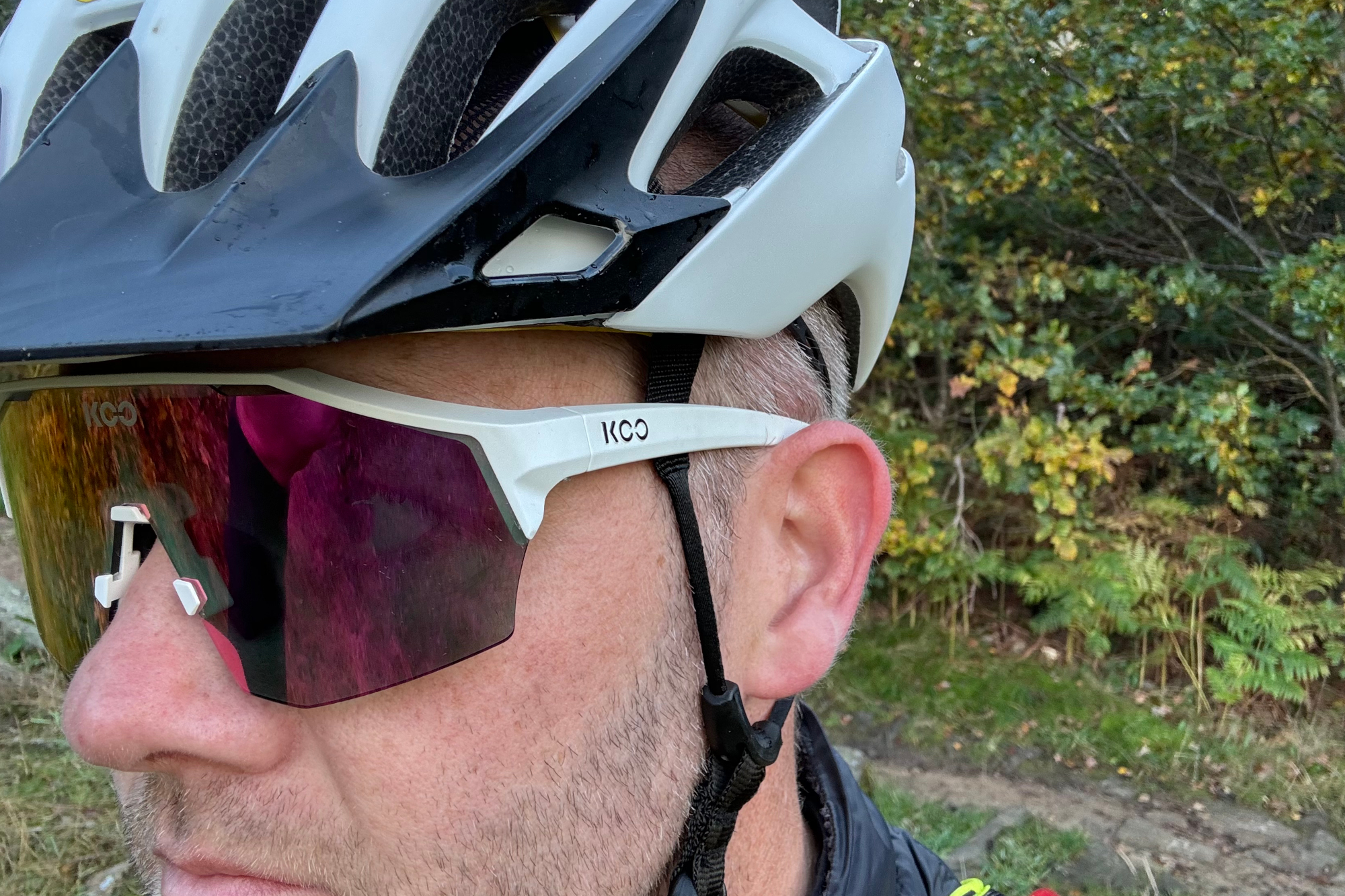
The Mavic Syncros SL MIPS is quite an unusual proposition when compared with the best road helmets currently on the market. With its increased coverage and removable peak, it is also suitable for gravel and even light XC MTB use. A multi-use helmet sounds like a great idea, but does it live up to expectations in the real world?
The construction
The Syncros SL features a polycarbonate shell, an EPS foam construction, and an integrated MIPS liner (Multi-directional Impact Protection System). Plenty of other brands license this technology, which promises more protection should the worst happen. It lowers the effect of rotational forces on the brain in the event of a crash and only adds 25-45 grams of weight. However, the extra webbed structure can hinder airflow in some designs. My test lid came in at 283 grams, which, although average for a road helmet, is pretty light for an off-road version with more head coverage and a peak.

The padding uses 37.5 technology, with natural active particles to help regulate temperature. It feels slightly firmer than many other brands I've used and is somewhat thinner. The front ports are covered with insect mesh, which I found handy for keeping the bugs out towards the end of summer. However, those in warmer climates may find that combined with the MIPS insert, airflow is limited more than they would like.

Mavic’s Autofit chin straps are also worth mentioning. They are much thinner than a standard flat strap around the ears and easily adjustable. I think they look great, too, and for those lucky enough to spend lots of time riding in the sunshine, they should minimize facial tan lines.
Mavic uses its Ergo Hold SL retention system on this lid, which combines a small rear dial with an adjustable height cradle so you can fine-tune where it sits on the back of your head. It's a very svelte set-up with skinny straps and connecting pieces. There is also an XRD foam layer around the front of the helmet between the MIPS system and the outer shell, which is said to mould to your head. It is soft and flexible, though as it's super thin, I'm not sure how much of a difference it makes.
The ride
My first impressions were good. It is well made and feels light in the hand, and despite its skinny straps and lightweight retention system, it's solid, too. It ships with the peak in place, though it's easy to remove, and neat colour-matched tabs are supplied to cover the mounting holes. The peak is much smaller than you'd find a full-on MTB helmet, so it doesn't work quite as well in terms of shielding your eyes, but it does make a difference, and I think it looks good too.

Adjusting the straps and retention system was straightforward and intuitive. The dial on the rear is small but works well, and the cradle is easy to tweak, even in full-finger gloves. However, despite being easy to set up, I struggled to find a fit I was pleased with.
Helmet sizing is a personal preference based on the shape of your head, so it's hard to criticize Mavic as the rest of the helmet is very well put together, and you may find it works for you. It sat slightly higher on my head than I would have liked, leaving a larger-than-ideal gap between my ears and the helmet's base.
It fitted reasonably well circumference-wise without any tight spots, though this might not be the lid for you if you have a square head shape. Since my head measures 57cm, I went for Medium, which is designed for heads 54-59 cm, based on Mavic's guidelines.

It's well-vented, with all 26 ports doing a good job keeping my head cool at slower gravel climbing speeds and faster road rides. I suspect the insect mesh slowed airflow a bit, but it wasn't enough to bother me. Luckily, I didn't have to test its full crash protection capabilities. However, it's held up well and still looks excellent with no apparent signs of wear or damage, and having the extra protection of the MIPS liner is a definite bonus.
Value and Conclusion
At £150 / $150, the Syncros SL MIPS sits in the mid-to-high-end category for helmets, but its peak and clear crossover intentions make it unique in a crowded marketplace. Plenty of lids billed for the road at that price point are perfectly fine for gravel, but very few share genuine off-road features. Kask used to offer its venerable Mojito with a peak, but they no longer list them and Cannondale's Junction features a similar small peak but isn't nearly as well-ventilated as Mavic’s offering.
As a road helmet, it's perfectly acceptable, but its real strength is its ability to cross over into different disciplines. The addition of a peak won't make much difference to road-biased riders but gravel riders, and those with an MTB background will appreciate the extra protection and the trail aesthetic. Currently, there aren't many helmets available covering multiple disciplines this well, which, provided the shape works for you, makes this an interesting choice.







